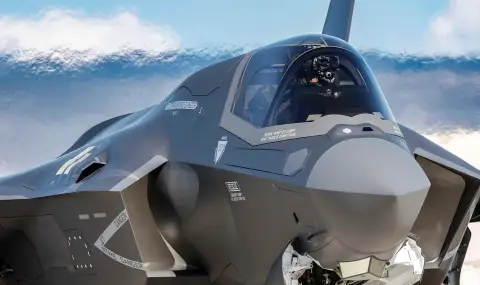For an alliance like NATO, built on cooperation between countries within it, air power often looks more like competition. NATO countries use a variety of fighter jets - from the latest in stealth aircraft to old Soviet ones - and the alliance lacked a standardized fighter jet.
The F-35 had aspirations to become just that. After the full-scale Russian aggression against Ukraine in 2022, a number of European countries lined up for the fifth-generation American jet, cepa.org writes.
Portugal asked to replace its F-16s with the F-35, and even a non-NATO country like Switzerland wants to order 36 fighter jets to replace its F-18s. Add to this countries such as Romania, Belgium, Greece, Italy, the Netherlands, Poland, the Czech Republic, Denmark, Germany, Norway, Finland, the United Kingdom, and Canada. So where is the problem?
Since the inauguration of the Donald Trump administration, a series of statements from Washington have portrayed the European continent not as a friend, but rather as a competitor. Portugal and Canada may reconsider their decisions to buy the fifth-generation stealth fighter. In Denmark, politicians have been heard saying that the country “should avoid American weapons if at all possible”. British unions are demanding that the Royal Air Force buy the fourth-generation Eurofighter Typhoon instead of the F-35.
To top it all off, Trump has threatened to annex Greenland, not even ruling out the use of military force to seize territory from another NATO ally. And so, suddenly, Europe is questioning whether the US remains a reliable ally for Europe, and whether a man like Trump, who changes positions every few hours and imposes tariffs on his former friends, can be relied on.
There are even rumors - denied by American and European officials, as well as by the manufacturer Lockheed Martin - that the F-35 has a switch that allows the US to disable the aircraft remotely.
Meanwhile, European nations, including Britain, France and Germany, are pushing for the continent to arm itself quickly against the Russian threat. Buying European-made aircraft such as the French Rafale, the Swedish Gripen and the Typhoon would be a major boost for Europe's defense industry. However, there are questions that Europe needs to address before abandoning the F-35.
First, what exactly is Europe's alternative? By 2035 There should be more than 600 F-35s stationed at NATO air bases in Europe, according to Lockheed Martin. About 2,500 F-35s have been ordered for the U.S. Air Force, Navy and Marine Corps, plus another 1,000 for overseas customers, of which 1,100 have already been delivered. Lockheed Martin plans to field 190 F-35s in 2025 alone.
Europe’s big problem is that it can’t produce fighter jets fast enough. The Rafale’s maker, Dassault, boasts that production will jump from two planes a month to five a month. At that rate, it will take years to fill existing orders. As for the Gripen, only about 300 have been built since 1987, and manufacturer Saab has the capacity to produce just 24 a year. About 700 Eurofighter Typhoons (a joint project between the UK, Germany, Italy and Spain) have been produced, with an annual capacity of 20 aircraft.
The European continent currently has two competing projects: one is called the Future Combat Air System (between France, Germany and Spain). It is to build a sixth-generation fighter, more advanced than the fifth-generation F-35. History suggests that its planned debut in 2040 could be postponed, and there is no guarantee that there will be enough money and political will to complete the project. The other program, the Global Combat Air Programme (between the UK, Italy and Japan), for a sixth-generation stealth fighter is due to enter service in 2035 at a cost of at least $100 billion. But the continent’s air forces need the planes now and cannot wait a decade.
Current European production of fourth-generation aircraft is only about 60 new aircraft per year, so it will take years to replace the F-35s on order and expand production capacity to meet demand.
In addition, European aircraft use many American components, such as General Electric engines for the Gripen and electronics for the Rafale and Typhoon. The same is true for the American manufacturer, which uses European components for its F-35s. Lockheed Martin says that about 25% of the aircraft are European, highlighting the interdependence of many modern weapons systems and the difficulty of defense sovereignty, even for the United States.
Given the instability in the world - and in American domestic politics - it makes sense for Europe not to tie its defense to just one foreign weapon. Cutting some orders for the F-35 while acquiring European fighters would be sensible. Under normal circumstances, Europe would have time to increase its defense industrial capacity. But with an aggressive Russia on its doorstep, conditions are not normal.
Whatever its shortcomings, the F-35 is a weapon that is available now and meets Europe's immediate needs. Unless the plane becomes part of the current trade war.
